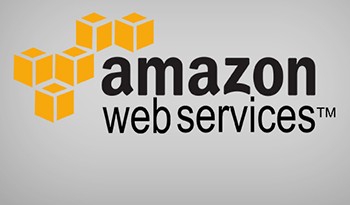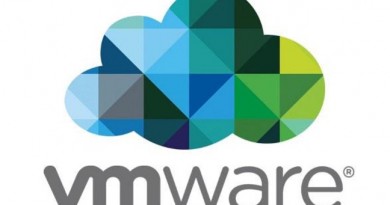Creating Your Enterprise Cloud Connectivity Strategy
It’s safe to say that enterprise cloud is here to stay. Cloud services have augmented the way we deliver resources, support new types of users, and create new types of business strategies. Today, organizations are looking at even more ways to leverage cloud computing environments to help their businesses become much more agile.
Spending on cloud infrastructure and platform could rise from $16 billion in 2014 to $43 billion by 2018, according to a recent Goldman Sachs report. The share of cloud infrastructure and platform in enterprise IT spending is forecast to increase from 5 percent in 2014 to 11 percent by 2018. This will be driven by the increasing shift of IT budget from traditional in-house delivery methods to various flavors of cloud computing as a means to cut cost and create new revenue streams.
All this in mind, let’s focus on one of the biggest questions facing enterprises when they look at the modern cloud ecosystem: “How do I create a good cloud connectivity strategy that will allow me to leverage my on-premise investment and a public cloud architecture?”
To answer it, let’s look at two leading public cloud providers and what they’re offering around enterprise cloud connectivity. But first, we’ll need some definitions.
What is Enterprise Cloud Connectivity?
Enterprise cloud connections enable the interoperability between on-premise resources and public cloud environments. The on-prem environment can be a branch office, a colocation data center, or even a major enterprise data center. The goal is to create optimal business agility, where the business can adjust or scale according to market demand.
Enterprise cloud connectivity uses a variety of secure (and fast) connection protocols to allow organizations to integrate with network, storage, compute, and even user environments. The biggest difference has been the ease of creating these connections and how they can help transform a business. In the past, these connections were made manually and required a lot of administration. Today, major providers are offering easier ways to integrate with their cloud resources.
Now, let’s look at two examples of enterprise cloud connectivity in the public cloud ecosystem.
AWS Direct Connect
Amazon Web Services is the most popular cloud on the market. They can support compliance-based workloads, integrate with complex storage environments, and even provide new types of workload delivery methodologies. Recently, Amazon has made it even easier to connect into its ecosystem.
AWS Direct Connect lets you establish a dedicated network connection between your network and one of the AWS Direct Connect locations. Using industry standard 802.1q VLANs, this dedicated connection can be partitioned into multiple virtual interfaces. This allows you to use the same connection to access public resources, such as objects stored in Amazon S3 using public IP address space, and private resources, such as Amazon EC2 instances running within an Amazon Virtual Private Cloud using private IP space, while maintaining network separation between public and private environments. Virtual interfaces can be reconfigured at any time to meet your changing needs.
This kind of enterprise cloud connectivity comes with very real business and data center benefits:
Better bandwidth controls around cost and delivery
Allowing for better SLAs around consistent network performance
Integration with all AWS cloud services
Greater levels of business and data center elasticity
If you’re looking at integrating with an AWS environment, make sure to look at Direct Connect. It allows your organization to directly align with a specific cloud strategy, which can be an all-encompassing extension into the cloud, or you can utilize a specific AWS service, like integrating into the Amazon S3 storage ecosystem. The good part is that Direct Connect helps ease the adoption of your specific cloud use case.
Microsoft Azure ExpressRoute
Much like AWS, Azure ExpressRoute lets you create private connections between Azure data centers and on-prem infrastructure in your enterprise data center or a colocation environment. As Microsoft points out, ExpressRoute connections don’t go over the public internet. The connection architecture allows for more reliability, faster speeds, lower latencies, and higher security than typical internet connections. In some cases, using ExpressRoute connections to transfer data between on-premise systems and Azure can yield significant cost benefits.
For example, you can establish connections to Azure at an ExpressRoute location, such as an exchange provider facility, or directly connect to Azure from your existing WAN network, such as a multi-protocol label switching (MPLS) VPN provided by a network service provider. There are several benefits to using this type of architecture:
Data center and cloud extension
Building an ecosystem for hybrid applications
Creating an architecture build on auto-scaling and provisioning
Integrating Active Directory services across multiple locations
Use-cases around storage, backup, and recovery
Furthermore, with ExpressRoute, you can establish connections to Microsoft cloud services other than Azure, such as Office 365 and CRM Online. Connectivity can be from an any-to-any (IP VPN) network, a point-to-point Ethernet network, or a virtual cross-connection through a connectivity provider at a colocation facility.
Public cloud providers know that you’ve made big investments into your on-premise data center ecosystem. They know that you’re probably not ready to rip everything out and move everything to the cloud. This is why there has been some big initiatives around optimizing the way businesses connect into a public cloud ecosystem. These new solutions allow for an easier way to integrate on-premise resources with powerful cloud services. Ultimately, this helps organizations create faster, more reliable, and much more secure connections into their cloud ecosystem.




